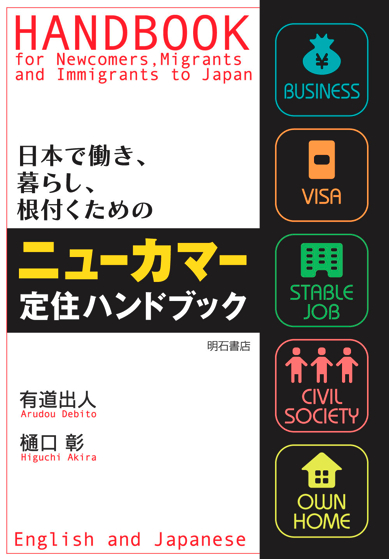mytest
http://search.japantimes.co.jp/cgi-bin/ed20081006a1.html
Japan’s foreign workers
Japanese companies are not as Japanese as they once were. Japanese banks are taking over the assets of failed Wall Street investments firms, of course, but in addition to those economic assets, Japanese companies have been obtaining another asset — foreign workers. Statistics released two months ago by the Ministry of Health, Labor and Welfare found that the number of foreign workers at Japanese firms took a huge leap from 2007 to 2008, rising by nearly one-third to a total of 330,000, the largest number ever. This may not constitute a large percentage overall, but it signals a large shift in attitude.
The rise in the number of foreign workers indicates the beginning of quantitative and qualitative changes in the working environment in Japan. If the attitude toward work has been changing among younger Japanese, the addition of foreign workers will surely accelerate those changes and add new ones. The government’s proposal earlier this year to progressively allow more foreign students and workers in the next few years will ensure that the nature and structure of many Japanese companies will evolve in the future to accommodate and integrate them.
Part of the upsurge in numbers can be partially attributed to new requirements in reporting employees. Finding so many more workers than expected may not have been the government’s intention when it set out to check the name, nationality, address and visa status of each foreign worker at every workplace, but it is one of the interesting results. Perhaps the numbers were vastly underreported in the past, but clearly the number of foreign workers is rising much more quickly than expected. Even with many firms not yet finalizing their reports on foreign workers, it appears that a great deal of change has already taken place.
Surveys taken in 2007 also show that even more of these workers than in the past received education in Japan. A larger percentage of foreign workers than ever now find work after graduating from a Japanese college or special training school. More and more graduates are deciding to stay on in Japan, thousands every year, with more workers going into nonmanufacturing firms and nearly a third staying on as translators and interpreters. The government proposal this summer called for increases of foreign students to nearly 1 million by 2025. Many of those future students are likely to remain to work in Japan.
The number of regular foreign employees has also leaped to its highest level ever, giving evidence that the new workers are not merely here for a few years, but intend to stay much longer.
More than one-third of all foreign workers are listed as heads of household with contract worker or temporary worker status. This suggests that many of these workers are starting to call Japan home. Workers are still coming over for short-term work, but even those short-termers are working here for increasingly longer periods of time.
Having all workers documented by companies and reported to the government signals a more responsible approach than the often-exploitative conditions for many foreign workers in the past. Though the total percentage still remains small, these workers are integrating more deeply into Japanese workplaces and society. That integration demands better conditions and a more concerted effort to find ways of successful and productive integration. Finding the right way forward on this issue is rather tricky, but can be expedited by focusing on the essentials of work and health.
First of all, it is essential that past problems with foreign workers be resolved. The importing of “trainees” and “interns,” terms often used to cover up exploitative and even illegal work practices in the past, needs closer oversight. Foreign workers should also be enrolled in social insurance, including pensions and health care, on an equal basis with Japanese workers. Contracts, too, need to be better negotiated and clearly written. When contracts are broken, on an individual or large-scale basis, foreign workers should be assured of the same rights as Japanese.
If the government is serious about letting the number of foreign immigrants rise, then internationally accepted working practices will have to be gradually introduced alongside traditional Japanese work customs. Japan is still far behind other industrialized countries in many aspects, but this will change. Estimates of a 15 percent foreign workforce in the United States and a slightly lower percentage in the European Union show that globalization of the workplace is arriving more slowly in Japan than in other countries.
That should not be cause for accelerating the process, nor for excessive caution, but should be simply understood as another stage of Japan’s economic and social development. Development brought through foreign workers will surely be to Japan’s benefit, even as the very concept of Japan becomes more diverse and participatory than in the past.
ENDS






1 comment on “Japan Times editorial Oct 6: Japan’s foreign workers”
I hope the government will start to do something about the companies that don’t enroll their employees in shakai hoken. They seem to just be ignoring this issue.